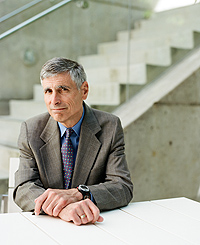
Leslie Williamson

Starting out in a career as a pediatric oncologist and HIV specialist, I soon encountered serious ethical questions that medical school classes had not prepared me to answer.
At what age should children learn they have a life-threatening disease? At what age should a child be expected to give informed consent or assent for the treatment of a serious disease, and what should be done if a child refuses potentially life-saving treatment? Is it moral to test drugs on a vulnerable population such as children? Is it moral not to test drugs on children when, after all, it’s only through such clinical trials pediatricians will learn what works? I hasten to add that some of these questions are still not fully resolved.
Medical education for my generation was by and large a matter of learning medical facts and gaining practical experience. At the end of the 1960s, when I was a medical student, bioethics was in its infancy. When my generation became physicians and scientists, we often relied on our internal moral compass when faced with ethical quandaries — a strategy that in hindsight did not always result in the best decisions.
Thatís changing today, and I think that is a good thing. As medical treatments and delivery have become more complicated and society has become more diverse, ethical dilemmas have come center stage. With these challenges emerging from every facet of medicine, more and more we rely on systematic analysis to guide our responses. That’s why today bioethics should be a part of medical school education for future physicians.
No matter what specialty students choose, they will face difficult ethical questions, which will grow only more common in the years to come. One area of health care already posing challenges is genetic medicine. If the genomic revolution bears fruit and personalized medicine becomes part of ordinary health care, we’ll face challenges to our privacy and will see greater potential for genetic discrimination.
The primary question for academic medicine is how to prepare future doctors. Most U.S. medical schools teach bioethics, but the specifics and time commitment vary widely. At Stanford, all medical students study the subject in the Practice of Medicine course during their first two years. They can explore the area further through additional courses and seminars and by choosing a concentration in biomedical ethics and medical humanities, one of eight in-depth study areas. The unusual program combines research and clinical experience; its students make valuable contributions to scholarship with the potential to direct future policies and protocols.
Bioethics began coalescing as a field in the 1970s, spurred in part by public debate over demands by the parents of coma patient Karen Quinlan to remove her feeding tube, in part by in vitro fertilization breakthroughs and in part by outrage over the Tuskegee syphilis study. Today, several thousand people in the United States make bioethics the focus of their teaching, clinical practice or research.
Ultimately, what is most important for assuring ethical medicine of the future is that medical schools imbue physicians and scientists with the knowledge and sensitivity to recognize when they have entered an ethical gray zone, and the wisdom to ask for guidance when the time comes, as it inevitably will.
Sincerely,
Philip A. Pizzo, MD
Dean
Stanford University School of Medicine
Carl and Elizabeth Naumann Professor, Pediatrics, Microbiology and Immunology


